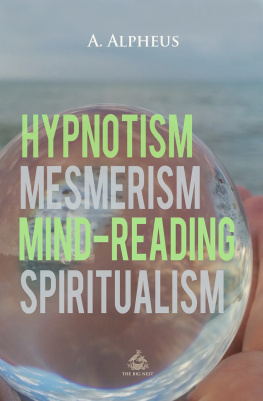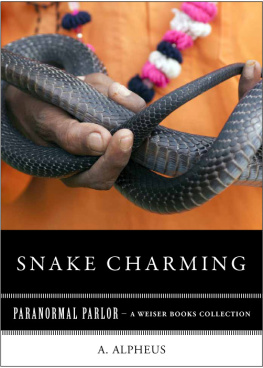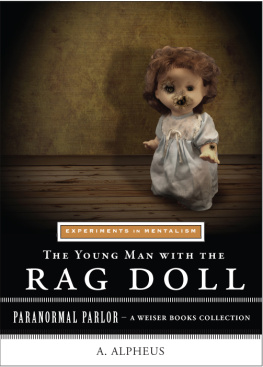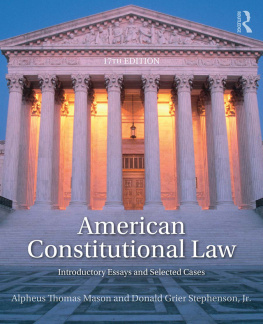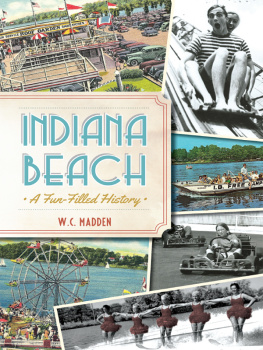

Published by Haunted America
A Division of The History Press
Charleston, SC 29403
www.historypress.net
Copyright 2006 by Alpheus J. Chewning
All rights reserved
Cover Image: The keeper of the Cape Henry Life Saving Station posed with his family for this dramatic photograph, dated 1911.
Courtesy of the Old Coast Guard Station.
First published 2006
Second printing 2010
Third printing 2013
e-book edition 2013
Manufactured in the United States
ISBN 978.1.62584.437.8
Library of Congress Cataloging-in-Publication Data
Chewning, Alpheus J., 1954-
Haunted Virginia Beach / Alpheus J. Chewning.
p. cm.
print edition ISBN 978-1-59629-188-1 (alk. paper)
1. Haunted places--Virginia--Virginia Beach. 2. Ghosts--Virginia--Virginia Beach. 3. Virginia Beach (Va.)--History. I. Title.
BF1472.U6C49 2006
133.10975551--dc22
2006023851
Notice: The information in this book is true and complete to the best of our knowledge. It is offered without guarantee on the part of the author or The History Press. The author and The History Press disclaim all liability in connection with the use of this book.
All rights reserved. No part of this book may be reproduced or transmitted in any form whatsoever without prior written permission from the publisher except in the case of brief quotations embodied in critical articles and reviews.
CONTENTS

INTRODUCTION
Theres no doubt about it, there are a lot of books out there about ghosts and hauntings. That certainly became obvious to me when I sat down to write my own. My initial reaction was that it would be difficult, if not impossible, to find new stories to tell, but I was gravely mistaken. Although many people often dont discuss their stories openly for fear of being ridiculed, they are more than willing to share them with someone who agrees to listen without being judgmental, especially if that person is also a believer.
Ghosts arent new. They are not a fad. They have been part of human culture since the beginning of recorded history. They appear in classic literature (Shakespeares Hamlet, circa 1600; Dickenss A Christmas Carol, 1843) and in modern movies (The Ghost and Mrs. Muir, 1947; Ghost Hunters, 2004). They are part of our language when we use the phrases a ghost of a chance or haunted by guilt. We even entertain our children with Casper, the Friendly Ghost, and at Halloween we encourage them to cover themselves with sheets and go trick-or-treating as little ghosts.
Why is it that some people look at us like we have three heads when we admit that we believe in ghosts? I suppose that could be the subject of another book, but not one Im going to write. Im not ashamed of the things I believe in. I believe in true love. I believe the designated hitter rule should go away. I believe barbeque is a noun, not an adjective or a verb. And I believe in ghosts.
Thank you for buying this book. I hope you will enjoy reading it as much as I enjoyed writing it. I hope it puts you in good spirits.


BLACKBEARD THE PIRATE
As certain as the sun behind the Downs
And quite as plain to see, the Devil walks.
Sir John Betjeman
When many think of the notorious Blackbeard the pirate, the Outer Banks of North Carolina automatically come to mind. From 1716 to 1718 Blackbeard became the most feared pirate on the sea, capturing at least forty ships. By 1718 he had a fleet of four ships and nearly three hundred men under his command.
Some historians believe that Blackbeard was actually a very fair and amiable sort; at least to those he liked. He wasnt a psychopath who killed for the fun of it or who collected human ears as trophies. Of course, once he supposedly cut off a mans finger (or possibly his entire hand) after the man refused to surrender his ring; there was also the time he shot his own first mate in the leg to prove to his crew that he had no favorites.
Blackbeard certainly understood psychology and used this to his advantage. Being over six feet in height, the pirate captain towered over most other men like a giant. To make himself appear even more fearsome, he grew a thick, full beard that covered his entire face and was known to decorate it with bits of colored ribbon. In battle, Blackbeard carried two swords and six pistols and put slow-burning fuses in his hair and beard so that his head would be shrouded in smoke. No doubt he looked like a demon to the superstitious men of his day. Because of his reputation, when most merchantmen saw Blackbeards ships approaching, they surrendered without a fight.
A woodcut of the pirate Blackbeard armed for battle with his cutlass and six pistols. Courtesy of the Old Coast Guard Station.
The Outer Banks of North Carolina became the base of operations for the pirates. The location provided quick access to the shipping lanes, the many bays and inlets provided concealment, and the narrow channels and treacherous currents discouraged uninvited guests. Bath, North Carolina, was the seat of government in 1718 and the home of the states governor, Charles Eden. Knowing the pirates cruel reputation, Eden offered a full pardon in exchange for Blackbeards promise to retire from piracy. The pirate went to Bath to accept the offer.
For a brief period Blackbeard, whose given name was Edward Teach (or Thach), enjoyed his retirement much like any other man would. He spent his great wealth freely and even bought a house in nearby Beaufort. The pirate and the governor soon became close friends. Governor Eden even officiated at the marriage of Blackbeard and his fourteenth wife, sixteen-year-old Mary Ormond. The wedding was attended by dozens of the pirate captains old friends who began making frequent visits to the quiet little hamlet.
It didnt take long at all before Mr. Teach grew bored with the mundane life of an honest man. Hearing about the exploits of his friends persuaded Blackbeard to resume his chosen profession. In exchange for a portion of the ill-gotten gains and a promise that vessels sailing along the North Carolina coast would not be pirated, Governor Eden agreed to turn a blind eye on Blackbeards activities. With the Carolina coast off limits, Blackbeard frequently sailed north to prey on the heavily laden merchant ships entering the Chesapeake Bay. When his ships could carry no more, he would return to his sanctuary.










